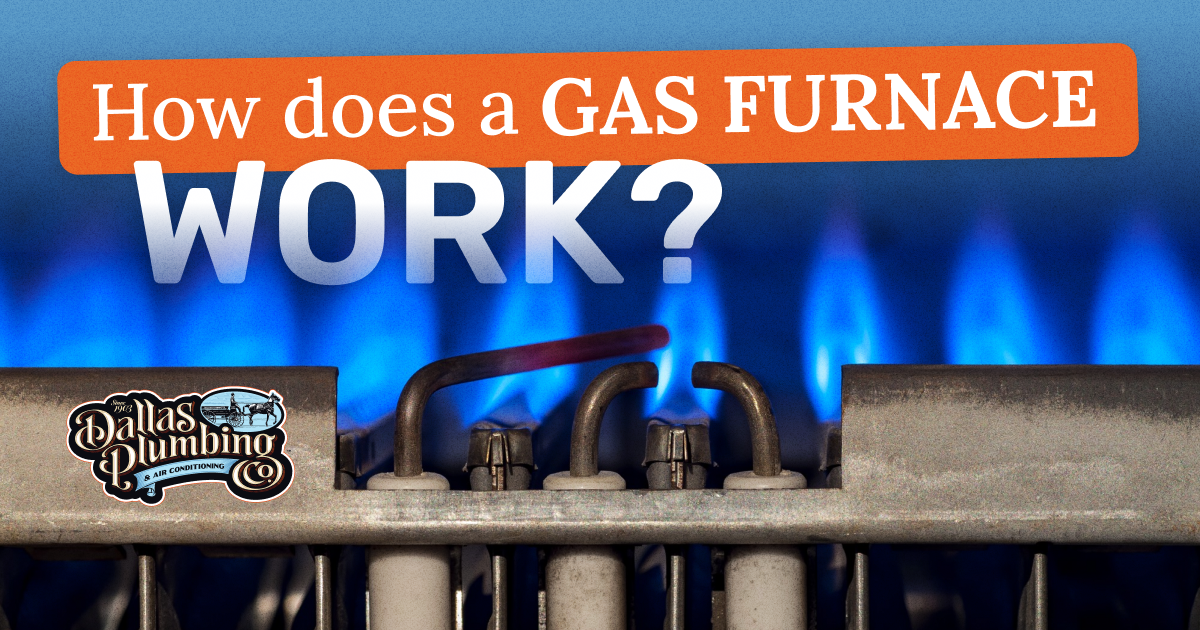Gas furnaces work tirelessly to keep us warm during the colder months. To truly appreciate the role, it’s essential to understand what your gas furnace is and how it works.
In this blog, we will dive into the basic operation of a gas furnace, explore how long a typical unit lasts, and understand the essentials of caring for the gas furnace in your home. If you have a gas furnace, read along to get the scoop on how it works and how to care for it.
Gas Furnaces: How Do They Work?
Gas for an assist consists of several key components that work together to generate heat and are distributed throughout the home. Here are the main parts and functions of a typical gas furnace:
- Thermostat: serves as the control center that regulates the temperatures being produced by the furnace.
- Gas valve: regulates the flow of natural gas into the combustion chamber.
- Burners: responsible for igniting, the gas, and air mixture in the combustion chamber, creating a controlled flame.
- Combustion chamber: the area where the gases and burns; are designed to safely contain, and control the combustion process and separate the combustion products from the heated air.
- Heat exchanger: transfers heat from the combustion chamber to the air circulating through the furnace.
- Draft inducer motor: assist and direct the combustion gases out of the furnace and into the venting system.
- Blow motor: responsible for circulating the heated air through the ductwork and into the living spaces.
- Blower fan: attached to the blow motor to move air through the heat, exchanger and into the ductwork.
- Blue pipe or vent pipe: responsible for safely, venting, and combustion of by-products, such as carbon monoxide, to the outside of the home
- Air filter: traps dust, debris, and other particles from the incoming air.
- Ignition system: ignite the gas into burners.
- Pressure switch: ensures that there is proper airflow through the furnace before allowing the ignition sequence to start.
How Furnace Parts Work Together to Heat the Home
As we review all the parts of a gas furnace, it is evident that the process of heating a home can be quite complex. However, these parts come together, seamlessly to heat the home, and ensure that you are warm and cozy during the winter months. Below, we will describe the heating process of a gas furnace in three steps:
1. Thermostat Activation
The process begins with the thermostat, signaling the gas valve to open, allowing natural gas into the combustion chamber.
2. Combustion and Heat Transfer
In the combustion chamber, burners ignite the gas, generating heat. The heat is then transferred to the air through the heat exchanger, separating combustion by-products.
3. Air Circulation and Distribution
The blower motor propels the heated air through the ductwork, distributing it through the home. Once the thermostat senses the desired temperature, the gas valve closes, concluding the heating cycle.
How Long Does a Gas Furnace Last?
The lifespan of a gas furnace can vary, depending on factors, such as the quality of the unit, maintenance practices, and usage patterns. It is reasonable to expect that your gas furnace will last you between 15 to 30 years. Here are some key factors that will influence the lifespan of your gas furnace:
- The manufacturer in the quality of the furnace itself
- Heating Maintenance practices are crucial for the longevity of the furnace as they help keep the unit clean and address minor issues.
- The frequency intensity of furnace usage
- Quality Heating Installation
- Environmental factors such as weather conditions, excessive dust, or corrosive atmospheres
The best advice we can offer in terms of getting the most out of your gas furnace is to get regular maintenance services for it. These services will ensure the unit is running smoothly and that heating repair issues are caught early on.
FAQ: Gas Furnaces
Will a gas furnace work if the power goes out?
Most modern gas furnaces use electronic ignition systems to light the burners. Therefore, when there is a power outage, even a gas furnace may not work.
What are the disadvantages of a gas furnace?
Some of the key disadvantages of a gas furnace are that they rely on a continuous supply of natural gas, prices of which fluctuate depending on its available supply. They also emit a small amount of carbon dioxide (CO2), making it crucial for regular maintenance services to ensure that there is no build-up of CO2 in the home.
Call Us for Top Quality Gas Furnace Services
Are you in need of gas furnace repairs, installations, or maintenance services? If so, reach out to the best gas furnace technicians at Dallas Plumbing & Air Conditioning. Our high expertise and knowledge will ensure that your home is warm, safe, and comfortable.






